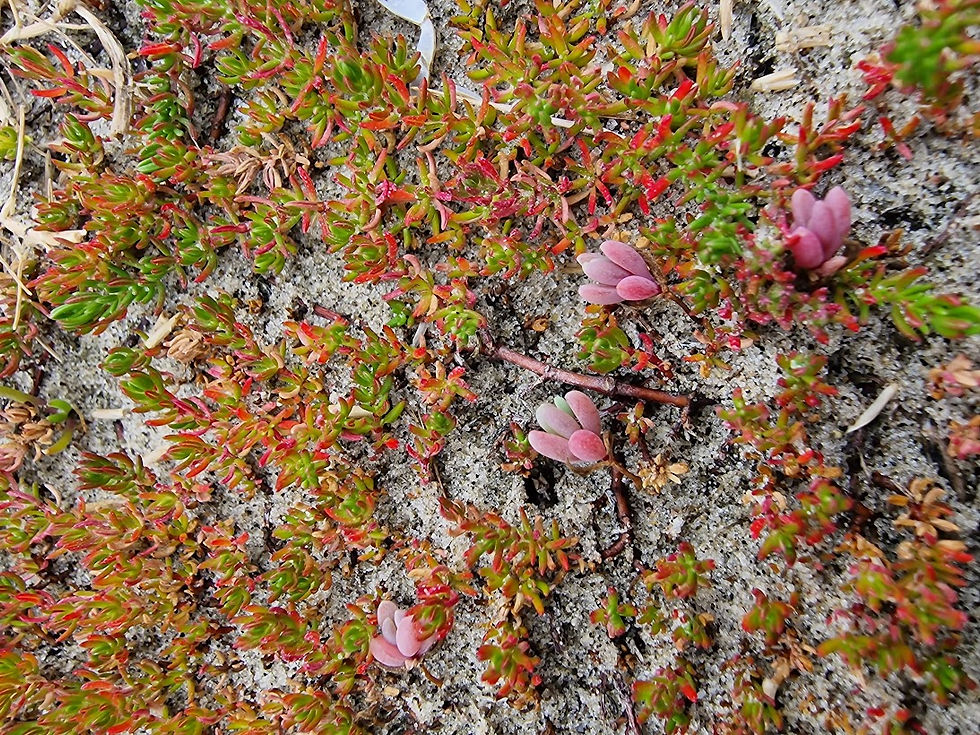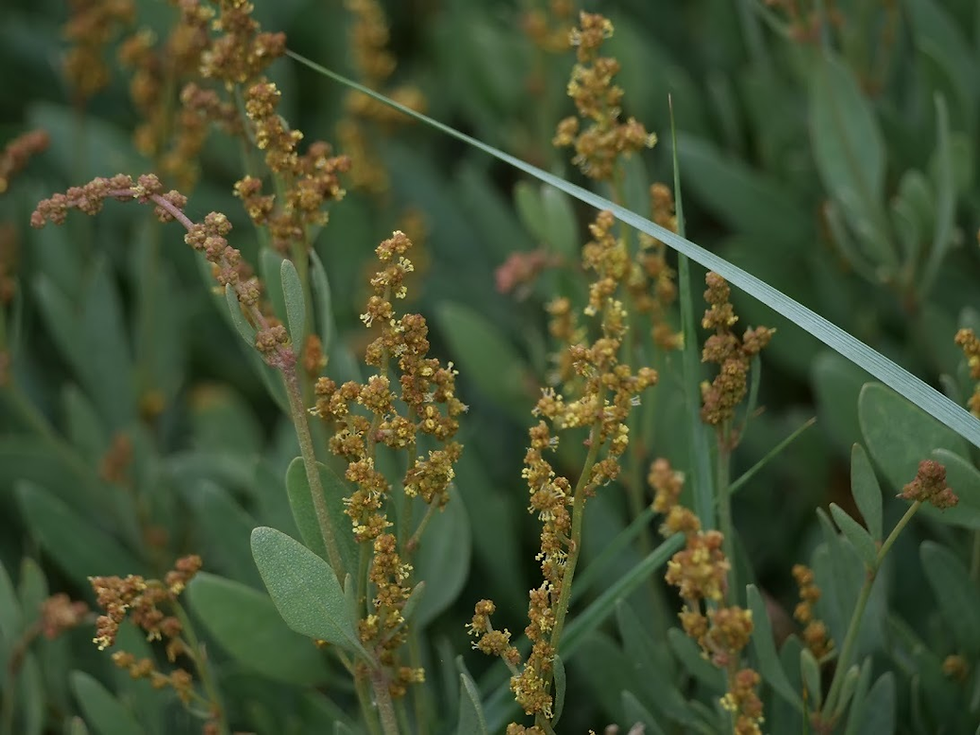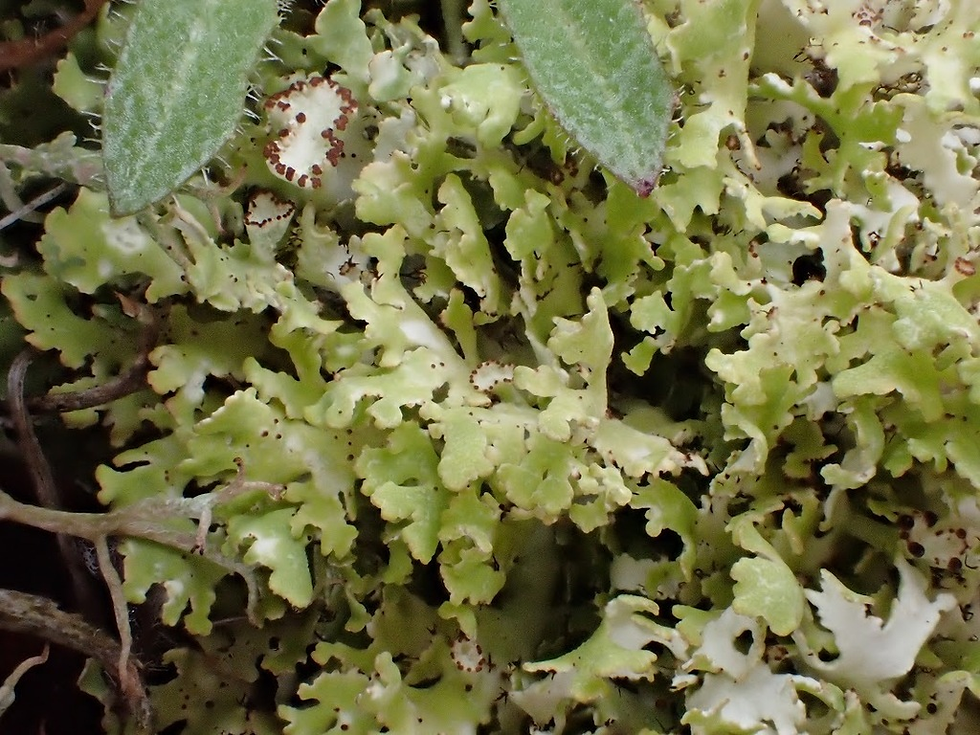East Head, West Sussex. Flowering Plants, especially glassworts, Bryophytes and Lichens 24.07.23
- Sim Elliott

- Jul 25, 2023
- 5 min read
Visit one of the last surviving pieces of natural coastline in West Sussex. East Head is an example of the nationally rare and fragile, yet dynamic, sand-dune habitat. ... East Head’s [has] distinct habitats - shingle, sandy beach and dunes that graduate into salt-marsh. Maritime plants, such as the tough-leaved sea holly and sea bindweed, grow through the sand. East Head | West Sussex | National Trust
East Head is at West Wittering; at the extreme south west of the Manhood Peninsular, at the entry to Chichester Harbour. To get to East Head I took the train to Chichester from Brighton (two an hour; 55 minute journey) and then took the 53 bus to East Head (West Wittering Old House stop) from Chichester Cathedral. It takes 22 minutes to West Wittering Old House on the 53 or 32 minutes on the 52), the best stop for East Head. The 52 and 53 busses go every15 minutes (alternating; 2 52s and 2 53s an hour); both go to West Wittering; the 53 goes to West Wittering then East Wittering; the 52 goes to East Wittering before 52. From West Wittering there is a 30 minute walk to East Head
The bus stop is marked with a pink square. Walk via Snow Hill, which has interesting salt marsh to the south of the path with many wading birds


All sections of text in italics are quotations, sources sited.
The photographs in this post are ordered into categories: Glassworts, other flowering plants; lichens; bryophytes; and birds.
I am only an amateur naturalist; thus all identifications are provisional; if you note a mistake in identification please feel free to tell me. If you want to contact me about any aspect of this blog, email me at simeon[underscore]elliott[at]gmail[dot]com.
Here is Francis Rose's description of the wild flowers, lichens and bryophytes at East Head from The Habitats and Vegetation Of Sussex (1991):
The most westerly area is that of East Head, West Wittering, (SZ7698). This is a National Trust (NT) property and a Site of Scientific Importance (SSSI) that has developed over the shin- gle spit that formed long ago on the east side of the entrance to Chichester Harbour. The spit was breached by the storm of November 1953, but since then, with the help of Marram Grass planting and the placing of wattle hurdles to hold the sand, the dune system has extended considerably westward in front of the narrow dune ridge, so that now there are exten- sive fore dunes with much sand Couch Elytrigia juncea, and good development in some seasons of such strand line and open sandy beach species as Sea Rocket Cakile maritima, Frosted Orache Atriplex laciniata, Prickly Saltwort Salsola kali and Ray's Knotgrass Polygonum oxyspermum subsp. rali. Areas of shingle not covered by young dunes have Yellow Horned Poppy Glaucium flavum and other commoner shingle species.
The main white dunes have been built by Marram Ammophila arenaria, and here there are few other species; on lower dunes to the landward sides. However, Sea Spurge Euphorbia paralias is now locally very abundant, but Sea Holly Eryngium maritimum is now very local, due perhaps to visitors' trampling and needs protection. Portland Spurge Euphobia portlandica occurred here before the 1953 storm, but has not been seen since (but may perhaps one day recolonise this, it's most easterly site on our coastline, from the Isle of Wight where it is still present). Sand Catstail Phleum arenarium is locally common, as is Dune Fescue Vulpia fasciculata. Interesting low fixed dune grassland occurs behind the white dunes; this is dominated by such species as Red Fescue Grass Festuca rubra and Sand Sedge Carex are- naria. Humus formation in the sand is assisted by the carpets of such mosses as Tortula ruralis subsp. ruraliformis that colonies the dunes once the sand is fixed. Older dune grass- land has such rare species as Smooth Cats-ear Hypochoeris glabra, known in only a handful of open sandy sites in Sussex. A good lichen-heath is developed in one area to the north- east, with such species as Cladonia foliacea, C. cervicornis, C. furcata, C. portentosa, C. rangiformis, C. squamosa and Coelocaulon aculeatum, with the mosses Brachythecium albi- cans and Rhynchostegium megapolitanum, the last a local southern species. Cerastium diffusum is common here. Freshwater dune slacks are now beginning to develop between the older and younger dunes; these have carpets of the moss Bryum algovicum var. rutheanum already, and inter- esting vascular plants, such as Lesser Centaury Centaurium pulchellum, have begun to colonise this moist open calcare- ous habitat.
To the rear of the dune system, there extends what is per- haps the finest tidal salt-marsh in Sussex. At the upper tidal limits there exist extensive patches of Sea-heath Frankenia laevis in its best Sussex locality, in open sandy flats with Thrift Armeria maritima. Lower down, there is extensive middle salt- marsh community dominated by Common Salt-Marsh Grass Puccinellia maritima, but in July and August it is a blaze of violet-blue with both Common Sea Lavender Limonium vulgare, and the rare Lax-flowered Sea Lavender L. humile, which is confined to the Chichester Harbour area in Sussex. Sea Arrow-Grass Triglochin maritimum, Sea Plantain Plantago maritima and Sea Aster Aster tripolium are common, while the very local Golden Samphire Inula crithmoides (confined to this part of Sussex) is frequent on more elevated parts of the marsh. Another plant present here, Small Cord-grass Spartina maritima, a decreasing species, is also confined to the Chichester Harbour area in Sussex; it occurs only around small pools in the marsh, unlike its hybrid progeny S. anglica which is widespread on the mudflats and elsewhere in Sussex where this habitat occurs. The upper saltmarsh, however, is locally becoming much damaged by the trampling of visitors walking to the NW end of the dune system and needs urgent fence protection.
The West Wittering saltmarsh is the best locality in the county for the difficult genus of Glassworts Salicornia. All the known British species are to be found here:
Salicornia pusilla (upper zone of marsh only)
S. perennis (upper zone mainly) S. europaea (middle zones)
S. ramosissima (middle zones)
S. obscura (on creek sides, rare)
S. dolichostachya (on barer mud in lower zones of marsh, and its varieties fragilis and nitens, both rare).
Many other interesting species occur on dry banks, or in non- tidal brackish hollows by the West Wittering Marsh, particularly Slender Hare's-ear Bupleurum tenuissimum, and the other salt-marsh grasses Puccinellia distans, P. fasciculata and P. rupestris.
Sandworts
Perennial Glasswort Salicornia perennis



Common Glasswort Salicornia europaea

Purple Glasswort Salicornia ramosissima

Salicornia quinqueflora, Beaded Samphire

I am note sure of the identities of these Glassworts, I am doing further research!





Other flowering plants
Lesser (?) Sea Spurrey

Scarlet Pimpernel

Sea Heath

Sea Milkwort

Common Polypody

Biting Stonecrop

Sand Sedge

Lesser Centaury

Hairy Hawkbit

Smooth Cat's Ear

Hare's Tail Grass

Sea Rocket

Sea Spurge

Sea Holly

Evening Primrose

Purple Toadflax

Hairy Hawkbit

Hare's-foot Clover

Marram Grass

Sea Clubrush

Sea-Purslane

Saltmarsh Rush

Maritime Beet

Sea Couch

Gutweed

Annual Sea-Blite

Common Cordgrass

Bryophytes


Juniper Haircap

Sand-hill Screw-Moss

Whitish Feather-Moss

Lichens
Dog Pelt Lichen, Peltigera canina

Field Dog Lichen Peltigera rufescens

Possibly Alternating Dog Lichen Peltigera didactyla

Many-forked Cladonia, Cladonia furcata


Cladonia foliacea

Some contextual landscape scenes, including sand dune heaths








Comments